Published on October 22, 2018
Midas Gold Idaho wants to keep the community informed about the work we are doing at the Stibnite Gold Project site. The Ask Midas blog series gives the experts in our company a chance to answer some of the community’s most frequently asked questions and help clear up any misconceptions about the project.
Permitting a mine is not a quick or easy process, nor should it be. The process is based in rigorous scientific review and analysis. It takes years to collect the information for baseline studies of a proposed mine site and even more time to develop a plan for a project and fully evaluate the impacts it may have on the environment and surrounding communities. Midas Gold has been exploring the Stibnite Gold Project site since 2009 and in the permitting process since 2016.
In this week’s Ask Midas, I want to help you understand the process of permitting a mine and all the scientific research it involves.
WHAT GOES INTO PERMITTING A MINE?
Permitting a mine closely follows the scientific process – you ask a question, conduct lots of research, develop a hypothesis, thoroughly test it and then make your final conclusions.
The Question:
In our case, we asked ourselves how we could design a mine plan that:
- Accomplishes environmentally responsible and economically feasible mineral resource development at the Stibnite site;
- Provides socioeconomic benefits to the surrounding area; and,
- Facilitates broad environmental restoration benefits to the historic Stibnite Mining District and provides overall improvement to ecosystem functionality with a focus on sustainability.
The Research and Hypothesis:
Our “research” included analyzing the legacy impacts left at site, collecting our own data, reviewing opportunities for restoration of those legacy impacts and evaluating the regulatory environment. We studied the area for six years before developing our hypothesis. We presented the Plan of Restoration and Operations (PRO) to the U.S. Forest Service in September of 2016. The PRO is our “hypothesis” on how to design a mining project that makes the area better, reduces risk and can be approved through the National Environmental Policy Act (NEPA).
- By the time we submitted our PRO to the U.S. Forest Service, we had already spent well over $20 million collecting baseline data, evaluating alternative scenarios to our plan and compiling the required information into baseline reports.
- Our plan was 486 pages long, but that doesn’t include the 25 reports we included to support our findings (which cumulatively added up to more than 21,000 pages of submissions).These reports include studies on water quality, temperature and chemistry; fish and wildlife; sensitive plant species and hydrogeology, transportation and employment, economic impacts and benefits.
The Test:
The PRO is now being “tested” through the NEPA process. NEPA was carefully designed to analyze, refine and modify proposed plans, including those for mines. Through NEPA, multiple regulatory agencies are analyzing the PRO and associated data, collecting additional data, evaluating outcomes, and working with third-party experts to draw conclusions.
- Since submitting the plan, we have provided well over 25,000 pages of new information at the request of regulators. To do this, we have invested millions more in the permitting process, collecting data, analyzing and finalizing reports.
- As a part of this review, we have provided in-depth air quality modelling, wetland quality and functional assessments and surveys on stream habitat, geotechnical hazards and soil resources. We have also provided an economic and transportation impact analysis of our project on the community.
- Many of the reports and data we’ve provided evaluate current conditions as well as conditions anticipated during construction and operations, and during reclamation and closure.
The Conclusion:
Now, regulators are finalizing the analysis of the data and evaluating alternatives. They will then prepare a draft Environmental Impact Statement (EIS) for public review. During this time, the public will have an opportunity to review and comment on the suggested Preferred Action and other alternatives that were considered and provide feedback to regulators.
After final review of the draft Environmental Impact Statement and public comment, theU.S. Forest Service will deliver a Final EIS and Record of Decision that identifies if and how the Stibnite Gold Project moves forward.
Today, we continue to work with regulators, stakeholders and various communities to make sure the best project is what moves forward. We are scientists and we wholeheartedly believe in the scientific process.
We know that, by working through this process, and continuing to ask ourselves how we can leave the historic Stibnite Mining District better than we found it, will leave us with the best plan possible. And we truly look forward to finishing the permitting process and bringing the final plan to life.
